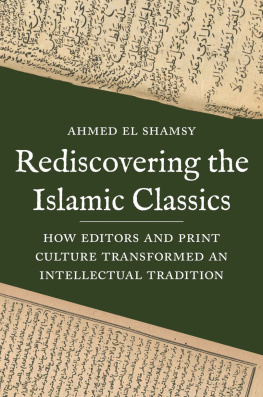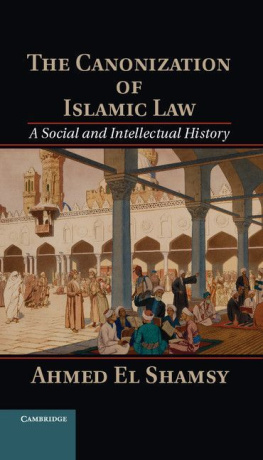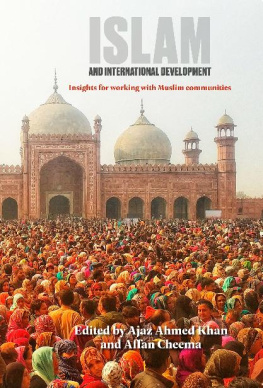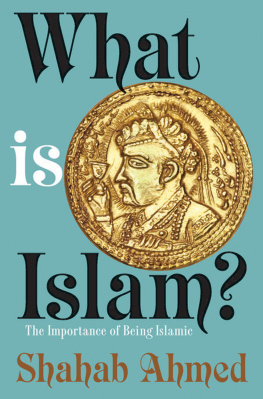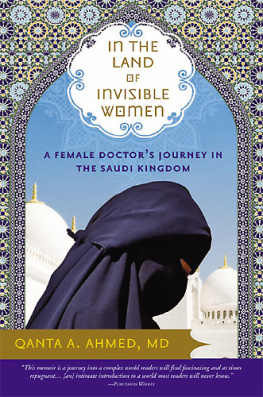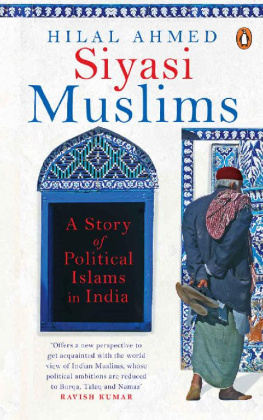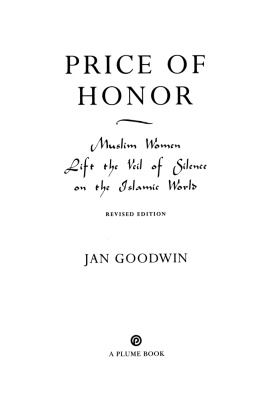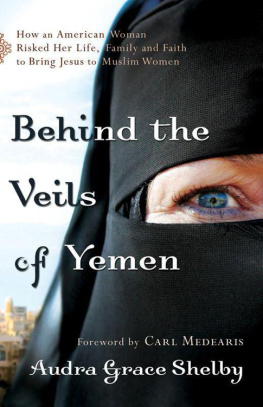A Quiet Revolution
A Quiet Revolution
The Veils Resurgence, from the Middle East to America
LEILA AHMED

Published with assistance from the foundation established in
memory of Philip Hamilton McMillan of the Class of 1894,
Yale College.
Copyright 2011 by Leila Ahmed. All rights reserved.
This book may not be reproduced, in whole or in part, including illustrations, in any form (beyond that copying permitted by Sections 107 and 108 of the U.S. Copyright Law and except by reviewers for the public press), without written permission from the publishers.
Yale University Press books may be purchased in quantity for
educational, business, or promotional use. For information,
please e-mail sales.press@yale.edu (U.S. office) or
sales@yaleup.co.uk (U.K. office).
Set in Minion type by Vondas Comp Services.
Printed in the United States of America.
Library of Congress Cataloging-in-Publication Data
Ahmed, Leila.
A quiet revolution : the veils resurgence, from the Middle East
to America / Leila Ahmed.
p. cm.
Includes bibliographical references and index.
ISBN 978-0-300-17095-5 (cloth : alk. paper) 1. Hijab (Islamic
clothing)Middle East. 2. Hijab (Islamic clothing)
United States. 3. VeilsMiddle East. 4. VeilsUnited
States. 5. Muslim womenClothingMiddle East.
6. Muslim womenClothingUnited States. I. Title.
BP190.5.H44A46 2011
297.576dc22 2010049535
A catalogue record for this book is available from the British
Library.
This paper meets the requirements of ANSI/NISO Z39.48-1992
(Permanence of Paper).
10 9 8 7 6 5 4 3 2 1
Contents
The Islamic Resurgence and the Veil:
From Emergence to Migration
After 9/11: New Pathways in America
Prologue
Acknowledgments
First of all, I would like to thank the Ford Foundation for a generous grant in support of my research for this book, and particular thanks are due Constance H. Buchanan for her steadfast support and patience. My thanks also to Ike Williams and to the always cheery Katherine Flynn at Kneerim and Williams Agency for their enthusiastic efforts on my behalf. Thanks also to the anonymous readers at Yale University Press, and also at Columbia University Press, for their generous readings of my manuscript and for their invaluable comments and suggestions. Many thanks, too, to the entire production team at Yale University Press, with special thanks to Heidi Downey, senior manuscript editor, for her wonderfully precise and exacting copyediting, which greatly improved my manuscript. I had the good fortune of having Jennifer Banks, senior editor at Yale University Press, as my editor. Jennifer took a keen interest in the project from early on, and her reading of the completed manuscript, at once enthusiastic and incisive, proved enormously helpful in enabling me to bring my arguments into sharper focus in the final reworking of the text. I owe her very special thanks.
I have worked on this book for many years, and thanks are due many, many others, far more than I can name, among them the women, many of them students, who kindly gave of their time in agreeing to be interviewed, and the women and men whose writings and activism I have had the privilege of observing, following, and describing in these pages. My enormous indebtedness to other scholars in the fieldpredecessors, contemporaries, and colleaguesis evident throughout the book. I am very grateful also to students and colleagues here at Harvard, where I have had the extraordinary privilege of participating in conversations both in the classroom and beyond that have stimulated and enriched my thinking beyond measure. Numerous conversations, exchanges, and consultations through the years with colleagues both at Harvard and in the wider Boston community have been illuminating and helpful. I would like to mention Kecia Ali, Ali Asani, Dorothy Austin, Ann Braude, Bernadette Brooten, David Carrasco, Nancy Cott, Maria-Pia Di Bella, Diana Eck, Janet Gyatso, Shahla Haeri, Charlie Hallisey, Karen King, Michael Jackson, Baber Johansen, Roy Mottahedeh, Afsaneh Najmabadi, Jacob Olupona, Diana Rowan Rockfeller, Elizabeth Schussler Fiorenza, Jane Smith, and Malika Zeghal. Throughout, Karen Armstrong, a frequent visitor, has been a cherished friend and an extraordinary and wonderful interlocutor.
I am very grateful also for the leaves that enabled me to complete this book, and to William A. Graham, dean of the Harvard Divinity School, for his supportiveness throughout.
Finally, I am enormously grateful to family and friends for their support and patience through the years of my work on this project.
Introduction
I recall a particular evening a few months after I moved to Cambridge as one of those moments that was at the genesis of this book. After an early dinner with a friend who was visiting from the Arab worlda well-known feminist of Muslim background whom I will call Aishawe were taking a leisurely stroll back to her hotel. Rounding a corner, we came to a spontaneous halt at the sight of a crowd gathered on the Cambridge Common, evidently enjoying a private event or celebration. What was arresting was that all the women were in hijabthe veil or head covering that some Muslim women wear. This was in the late 1990s, when the hijab was much less common than it is today in America. Seeing a public gathering of forty to fifty people, among whom all the women were in hijab, was still exceedingly rare. In fact, this may have been the first time I had seen such a gathering in America.
To them, said Aisha as we stood observing the scene, we are the enemy. Thats how they see us, all of us, people like us, feminists, progressives. Thats just how it is. She spoke ruminatively, as if resuming a conversation, which in a way she was. I understood at once of course whom she meant by them: Muslims who wore or required the wearing of hijab. We cant ignore that, she continued, or simply pretend it isnt so. And anyway they are our enemies. They threaten us, ban our books or try to, oppose everything we stand for. Thats just how it is.
It was one of those lovely, long summer evenings, a perfect sliver of moon in the deep sky. The Islamic calendar being a lunar one, I wondered for a moment whether the group had gathered in connection with a significant date or feast, but I couldnt think of anything, nor could Aisha. In the Muslim-majority countries in which we had both grown up, one didnt have to make a special effort to know where we were exactly in the Islamic calendar since its significant dates and feast days were ordinarily marked and celebrated by the broader society. But here we lived our lives by other times and other calendars, and special dates and feasts typically slipped by unremarked and unremembered. Even discovering when Ramadan was (in those pre-internet days) required special effort and research. Today, astonishingly to some of us, the Empire State Building is lit green to mark the month of Ramadan.
And now, said Aisha, as we resumed our walk, the twilight now perceptibly closing in, our own friends defend them. And whats worse, she went on, as we were saying, theyre right to do so. This is what they have to do in this country, defend minorities, defend peoples right to be different. Thats why we love their societies. Thats why we want to be like them.
We had gone back and forth many times on this subject through the past few days, over coffee and tea and the meals we had shared. This was a new and different time for us, posing new questions in the field of women and Islam, in which we both worked. When we began working on the subject in the 1970s there had been neither a Muslim immigrant problem in Europe, as was brewing now, nor was fear of Islam and Muslims in connection with terrorism even an issue. Both of these had begun to become issues mostly in the 1990s. In France the subject of women and Islam and the veil in particular were emerging as highly politicized issues in the fierce national debates under way around immigration policies, and they were topics that were often invoked in particular by the Right, who were in favor of restricting immigration. How, we wondered, would these winds of change complicate our subject even further, and how would this affect our work?
Next page

